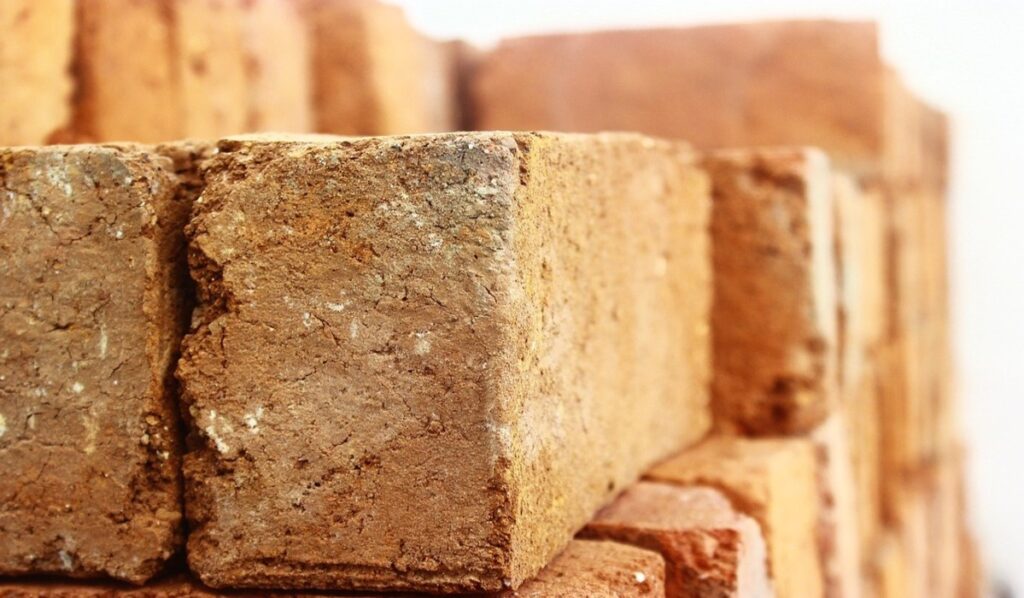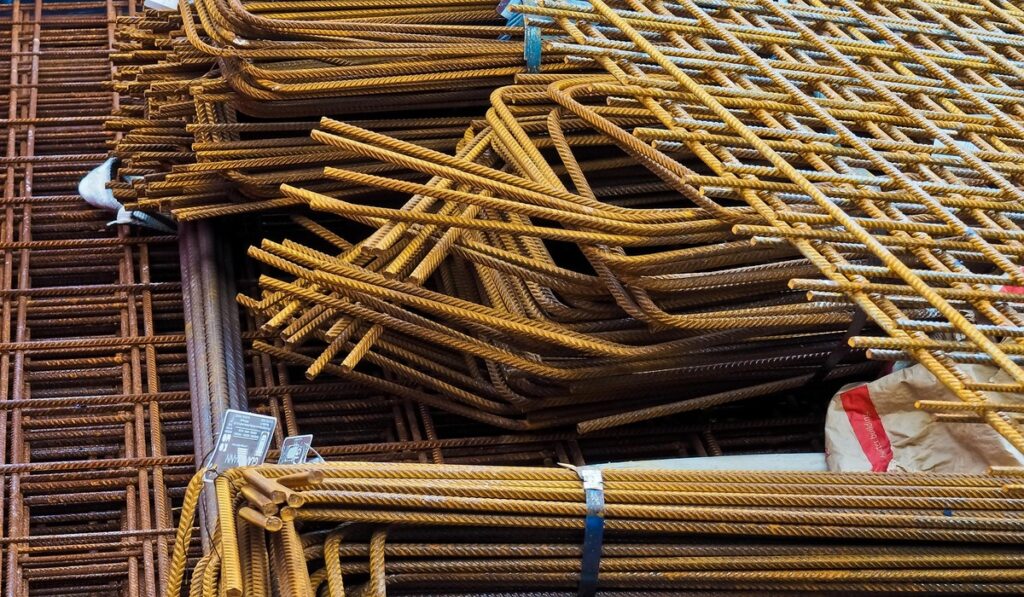Construction Material Calculation to estimate quantities of steel, cement, sand, bricks and others for House or commercial building construction. This is a very useful calculator that can calculate quantities of major materials required for construction of houses or commercial buildings. Before the start of construction work, planning is very important for the successful execution of any project. This user friendly tool allows you to quickly estimate the major construction materials required for construction such as steel, cement, sand, aggregate, flooring tiles, bricks, blocks and lumber. Simply select your construction type, enter the covered area in square feet or square meters, and get the quantities of major materials required for your project construction.

Why Accurate Material Estimation is Essential Before Start of Any Project
Accurate material estimation before the start of construction is very important due to the following reasons:
- Cost Efficiency: Knowing how much material is actually needed can help avoid wasted money and time due to over-ordering.
- Project Timeline: Having the right quantity of material available on site ensures smooth functioning and timely completion of the project.
- Environmental Impact: Proper material estimation reduces waste, and also reduces the environmental impact of your construction project.
- Quality Control: Using the correct amount of each material guarantees that your structure will meet safety and durability standards.
How to Calculate the Quantity of Steel for Construction
Steel is the most important construction material and the following is the procedure to find out the steel quantity required for the construction of a house or commercial building:
- Steel is used in RCC structures like beams, columns and slabs etc.
- To calculate steel quantity (kg) in RCC = (Total quantity of RCC x Percentage of steel required x Density of steel).
- The standard density of steel is about 7850 kg/m³.
- The percentage of steel typically ranges from 0.5% to 1.5% of the total concrete volume for slabs, columns and beams.
- 3%-6% should be added to account for cutting, folding and wastage.

How to Calculate the Quantity of Cement for Construction
The following is the procedure to find out the cement quantity required for the construction of a house or commercial building:
- Cement will be used in PCC, RCC and plaster work etc.
- To calculate cement, calculate PCC and RCC requirements for various structural members.
- The amount of cement varies depending on the grade of concrete (e.g., M15, M20). A standard mix ratio is 1:2:4 (M15), where there is 1 part cement, 2 parts sand and 4 parts aggregate.
- To calculate cement (bags) from concrete = Dry Volume of Concrete (CFT) x (Sum of Cement Ratio / Mix Ratio). Then divide by 1.25 to calculate quantity in bags.
- For calculation of plastering cement (bags) = Total plastering area (sq. ft.) / 66.
- For calculation of cement (bags) from masonry work = Masonry work (cubic feet) / 27.
- Dry volume = Concrete volume x 1.54.
- Each bag of cement weighs 50 kg and occupies around 1.25 cubic feet or 0.035 cubic meters volume.
- Add all above values and include 3%–5% for wastage.
How to Calculate the Quantity of Sand for Construction
The following is the procedure to find out the sand quantity required for the construction of a house or commercial building:
- Sand is used in PCC, RCC, brick work, plaster and masonry mortar.
- Sand quantities vary depending on the grade of concrete (e.g., M15, M20, M25). A standard mix ratio is 1:1.5:3 (M20), where 1 part cement, 1.5 parts sand, and 3 parts aggregate.
- For calculating Sand (cft) from concrete = Dry Volume of Concrete (cft) x (Sand ratio / Sum of Mix Ratio).
- Dry volume = Concrete volume x 1.54.
- For calculating Sand(cft) from plaster = Total Plastering area (square feet) x 0.066.
- For calculating Sand(cft) from masonry work= Masonry work (cubic feet) x 0.26.
- Add all above values and include 5%–8% for wastage.
How to Calculate the Quantity of Aggregate for Construction
The following is the procedure to find out the aggregate quantity required for the construction of a house or commercial building:
- Aggregate is used in PCC and RCC.
- Aggregate quantities vary depending on the grade of concrete (e.g., M15, M20, M25). A standard mix ratio is 1:1:2 for M25, where 1 part cement, 1 parts sand, and 2 parts aggregate.
- For calculating Aggregate (cft) from concrete = Dry Volume of Concrete (cft) x (Aggregate ratio / Sum of Mix Ratio).
- Dry volume = Concrete volume x 1.54.
- 2%–5% for wastage should be added.
How to Calculate the Quantity of Bricks or Blocks
The following is the procedure to find out the bricks or blocks quantity required for the construction of a house or commercial building:
- Total brick or block work will be calculated in cubic feet from drawings.
- The number of bricks or blocks depends on their size.
- Typically, 500 bricks (9″x4.5″x3″) are needed for 1 cubic meter of brickwork or 13.5 for cubic feet brickwork.
- The actual number of bricks or blocks may be calculated by this formula: volume of one brick/total brickwork volume.
- 5%–10% for wastage should be added.
How to Calculate the Quantity of Lumber
Lumber is used for the construction of wooden houses and normally, 5.8 square feet or board feet of timber is required for per square foot covered area of the house.
FAQs Q1: How much steel is required for 1 cubic meter of RCC (Reinforced Cement Concrete)?
Generally, steel volume varies from 0.5% to 1.5% of the total concrete volume for slabs, columns and beams. For 1 cubic meter of RCC, approximately following quantity of steel is required:
- Beam: 160 kg
- Column: 110 kg
- Slab: 80 kg
- Staircase: 85 kg
- Lintel / Coping: 50 kg
- Retaining Wall: 60 kg
Q2: How much cement is required for 100 square feet of plaster?
Approximately 1.5 bags or 75 kg of cement is required for 100 square feet of plaster.
Q3: How much sand is required for 100 square feet of plaster?
Approximately 6.6 cubic feet of sand is required for 100 square feet of plaster.
Q4: How to calculate the dry quantity of concrete?
The dry quantity of concrete is calculated by multiplying 1.54 by the concrete volume. For example, for the preparation of 1 cubic meter of concrete, 1.54 cubic meters of dry volume of cement, sand and aggregate will be required.
Q5: How much cement is required for 100 cubic feet of brickwork?
Approximately 3.7 bags or 185 kg of cement is required for 100 cubic feet of brickwork.

